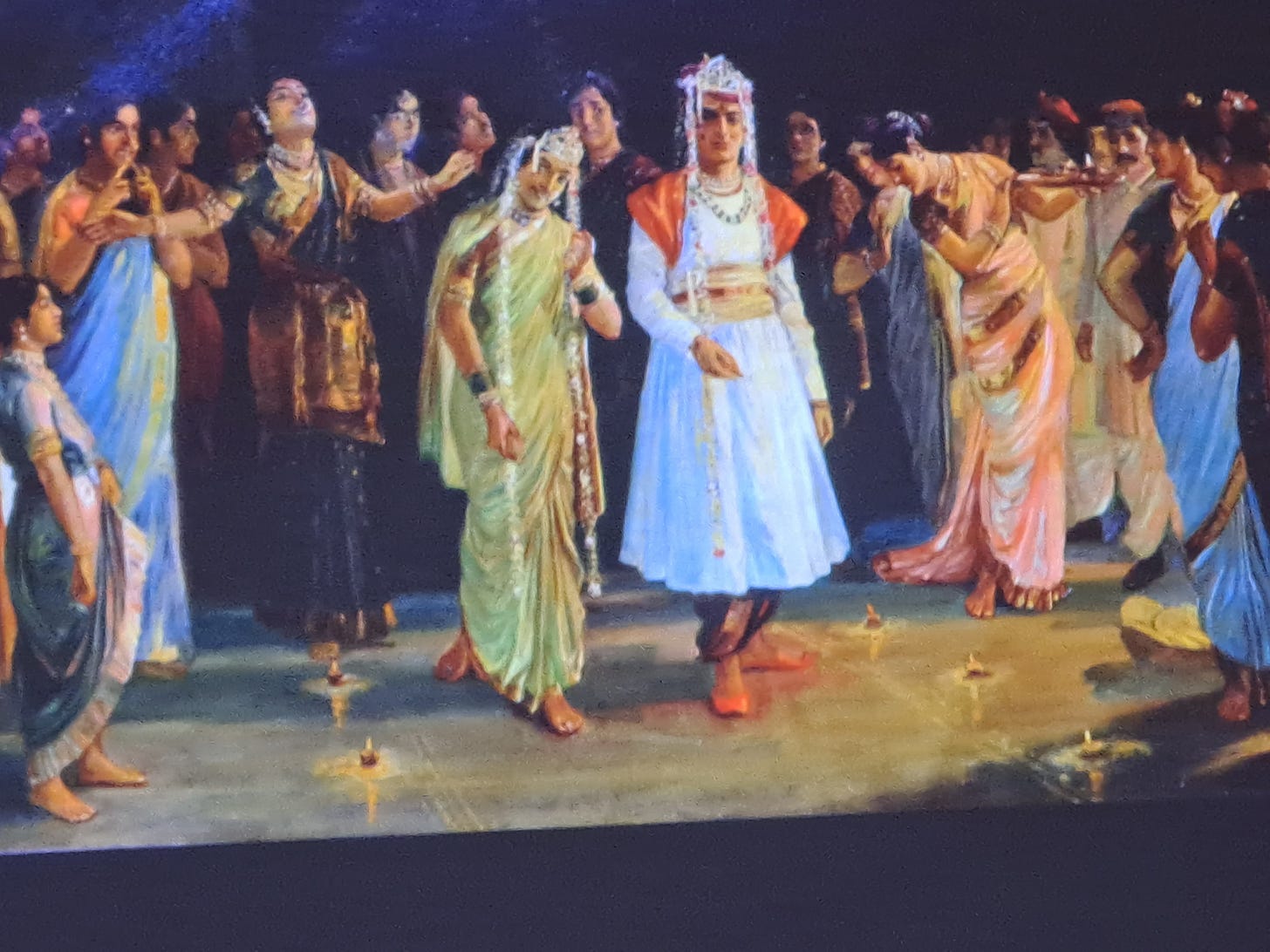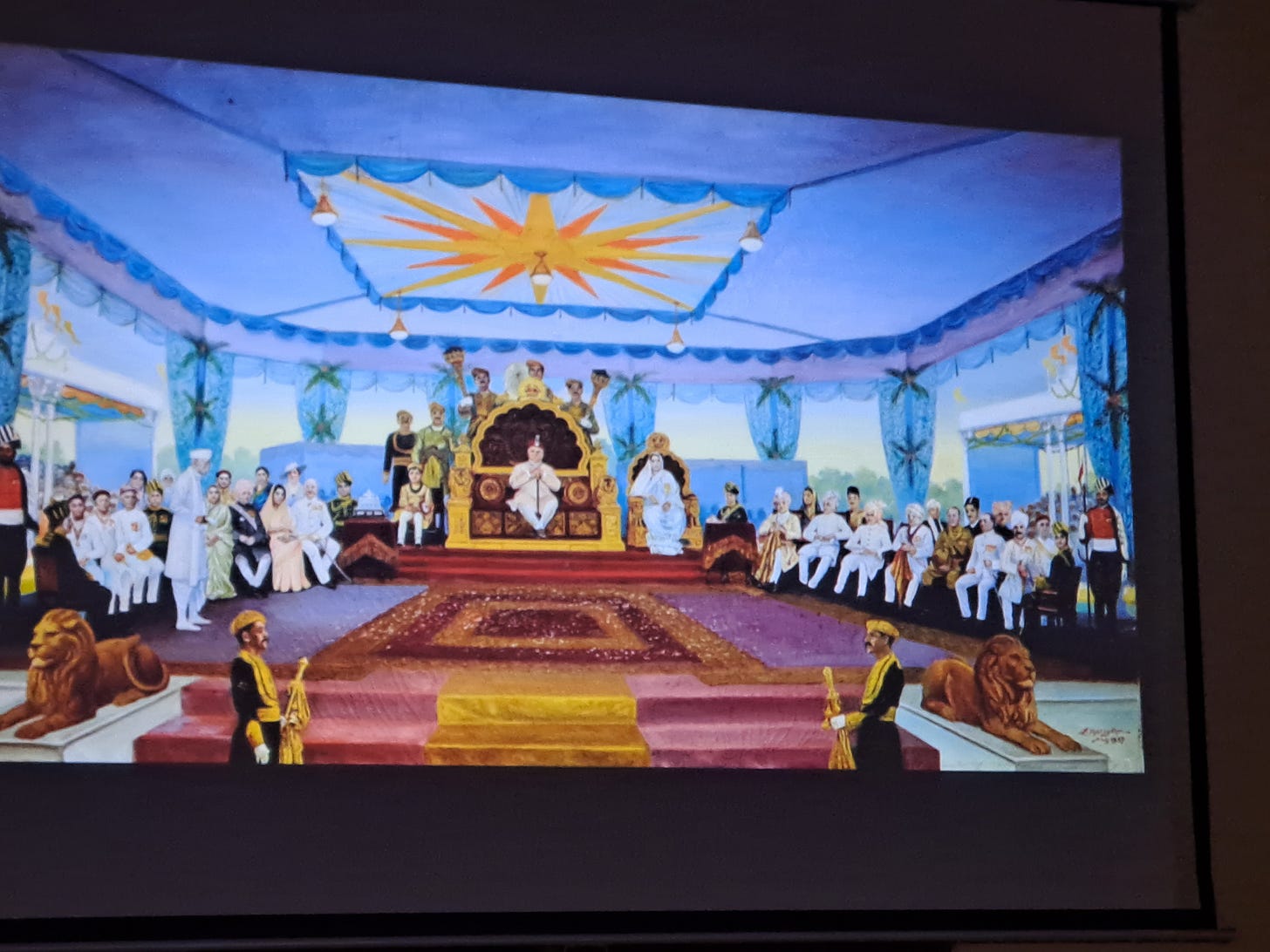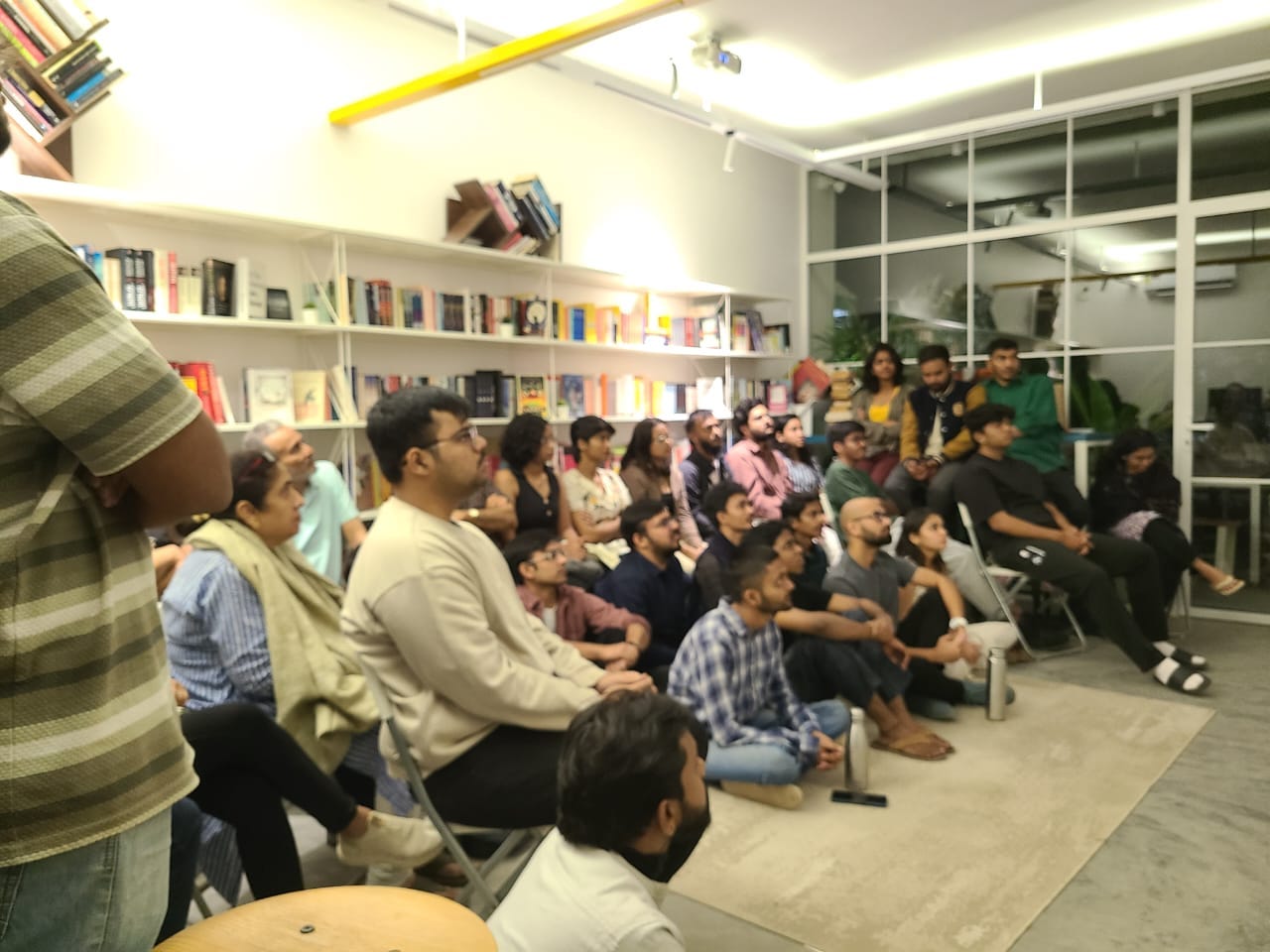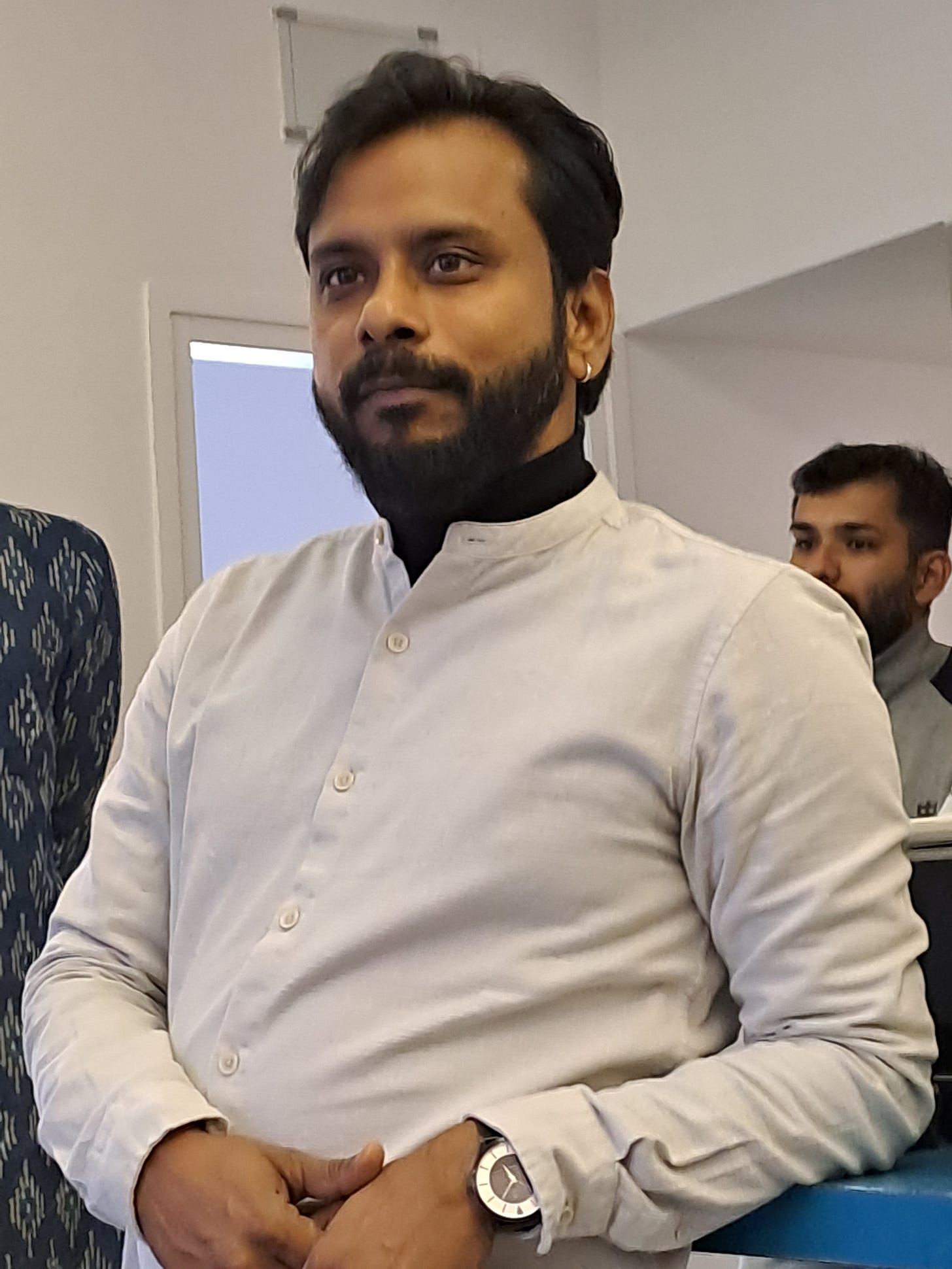In my small town, we are all so taken up by Raja Ravi Varma, that we often forget the several other Indian and European artists who were also hosted or commissioned by the Gaekwads to visit and stay in Baroda and who produced some impressive works of art. At a recent talk by Mumbai-based Sandeep Dahisarkar (art historian-archeologist-Indologist-researcher ++) hosted by the IGNCA Regional Centre, at the Ravi Varma Studio, the focus of attention was the contribution of talented painter Rao Bahadur M V Dhurandhar. Dhurandhar was introduced to Sayajirao in 1936, rather late in both their lives. So, there are only two works by Dhurandhar in the Gaekwad collection. Dahisarkar also showed a perceptive oil portrait of Sayajirao III by the artist, now in the collection of Anil Relia, Ahmedabad.
A perceptive portrait of Maharaja Sayajirao III wearing a flamboyant bow tie! From the collection of Shri Anil Relia, Ahmedabad.
Rao Bahadur Dhurandhar lived between 1867 and 1944, somewhat younger than Raja Ravi Varma, but in a manner, did take the Varma legacy forward where the content and subject matter of his artworks was concerned. He studied at the J J School of Art, Mumbai and taught there till almost the end of his life. His drawing and painting skills were recognized by the British who awarded him the title of Rao Bahadur and awarded membership of the Royal Society of Art, London. Dhurandhar’s paintings concentrated largely on masses of people engaged in something dramatic that would catch viewer attention. The two works in the Gaekwad collection are of a somewhat similar nature.
Paathavani by Dhurandhar. In the Fatesinh Museum, Baroda.
One is a post-wedding procession, the Paathavani where the newly-wed bride is being guided to her new home, accompanied by female relatives. This work is in the Fatesinh Museum. Check it out the next time you are there. It is a small work and can be easily missed, overshadowed by the gigantic Ravi Varmas, so ask Mandaben, the Museum Director, to point it out to you.
Hirak Durbar Mahotsav by Dhurandhar. In the Laxmi Vilas Palace.
The other work, Hirak Durbar Mahotsav, is in the Palace; Dhurandhar was commissioned the project of designing the Shamiana for the Diamond Jubilee celebration of Sayajirao III’s ascent to the throne. He also documented the grand ceremony in this Hirak Mahotsav painting. According to Dahisarkar, it is possible that this painting was made by Dhurandhar in Baroda, probably working out of the Ravi Varma Studio. The painting was completed in August 1938 and one of its high points is Madan Mohan Malviya reading out the Maanapatra to the king. (Madan Mohan Malviya was a co-founder of the Benaras Hindu University where Sayajirao III helped fund the Library and one hostel, both of which bear his name.)
A few years later, Dhurandhar made a copy of the same work. It is interesting to compare the two and note how a painter’s visual attitude can change over a period of time. Perhaps an actual ‘photographic’ representation (which was the first work) was not up to his own ‘painterly’ standards and so he ‘re-created’ the second painting from an artist’s point of view. There is a clear touch of sophistication in the second work, the rough edges evident in the original are smoothened over, and the spaces between the numerous characters better etched.
Dhurandhar’s specialty was large vistas featuring human activities of general interest. He was known for his figurative compositions with a strong thread of narration that wove them into an interesting whole. He often painted these as impressive murals stretched across walls in public buildings. His large painting of a traditional wedding of the Pathare-Prabhu community is a stunning visual treat what with its the galaxy of richly dressed women, but it is also a contemporary study (of those times) of popular textiles and ways of draping the saree. It is in the collection of Sangli Museum. At the same time, he created smaller works especially designed to look attractive on calendars and postcards that were very popular with aam janata. He also illustrated stories and articles in well-circulated regional magazines in Maharashtra, thus becoming a household name, a recognized artist while still active and working.
Dhurandhar’s other Baroda connection was that painter U P Rao, who taught in the Department of Painting at the Faculty of Fine Arts, MSU, in its first decade, was his devoted disciple. Dhurandhar was a very religious man, a committed devotee of Mahalakshmi. He made sure that his new work was always started on an auspicious day. He left a strong legacy of figurative compositions, (stylistically very different from that of Raja Ravi Varma) which was carried forward by painters such as M R Acharekar and Gopal Deuskar who followed him.
From the lyrical and charming world of Dhurandhar, I was jolted sharply into the gritty, unforgiving and brutal world of a non-touristy Banaras via the screening of Jhini Bhini Chadariya (The Brittle Thread), a 2021 film by Ritesh Sharma, himself a Banaraswala, who knows his city well, especially its unpleasant underbelly. Sharma was present at the screening organized by The Film Society of Vadodara, run by a bunch of enthusiastic young movie-buffs, this time at a shared office space in Subhanpura (their screening venues keep changing for several valid reasons). The exciting part of their screening is the animated discussion that follows often with either the director or one of the actors present, and if neither can make it to the event then the audience takes it upon itself to initiate one. It’s interesting and great fun. Jhini Bhini … has not been released yet and its screening in Baroda on December 8 was the first in Gujarat.
A totally immersed audience!
Why would anyone make a film like this one, a film that often seems like a documentary woven expertly into several narrative layers of motifs like a complex and brilliant Banarasi saree … much like the sarees woven routinely by the shy, orphaned Muslim young man who is one of the protagonists of the film, along with its other heroes -- a female Israeli tourist looking for a bidi and friendship and peace in one of the oldest cities of the world, fed up of conflicts between communities across the world, and a bright-eyed dancer with a handicapped little daughter, hoping for a big break and a happier, safer future, but trapped in an exploitative patriarchal situation feeding off her body.
Sharma is a bold, young filmmaker, wanting to tell stories that are real and raw and hauntingly filmed. I hope more people get to see this film and his future endeavours …
Ritesh Sharma, director, Jhini Bhini Chadariya.








